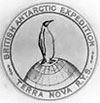Nowhere
November 17th, 2002
I have no idea why it gets warmer or colder. Go out one minute, the ice is melting. Fifteen minutes later, a bitter wind picks up, the temps drop 20 degrees, and you'd better have your hat.
Yesterday was Sunday, the rest day in McMurdo. I spent it hanging out with members of the MegaDunes team, and the LTER team.
MegaDunes is an expedition to an extremely remote part of the ice cap. They're going to put in about 300 miles away from Vostok, which is already so much nowhere only a hearty Russian crew can stand to be there. Underneath 2 miles of ice there's a lake that's been sealed since the time of the dinosaurs. As soon as they can figure out how to drill down without contaminating the lake with 21st century germs, they're going to start sampling that prehistoric body, which occupies hundreds of square miles under the ice.
The equivalent altitude at Vostok is about 15,000 feet. It's a shelf of nearly flat ice. So when you're up on the polar plateau (as it's called) you're at about 9,000 feet above sea level, but the combination of the cold air sinking and the earth flattening at the poles makes it seem like you're 4,000 feet higher.
Folks going to the plateau take high altitude training. They have to take drugs that enable their bodies to absorb oxygen more effectively.
The MegaDunes guys are bringing a winter mountaineering expert with them. Rob is a very experienced climber. Going to an infinitely flat, high plain of ice should be easy. Right?
He thinks so, but he's still worried. He has to get the four scientists in his charge back alive. And to make matters more intense for him, they're all personal friends.
Rob has final veto power over the team's comings and goings. If the science isn't done, but the weather is going foul, or someone is hurting from altitude sickness, or someone has been injured in an accident, it's his job to terminate the expedition and call in air rescue. He gets to veto his friend, the expedition lead, Ted Scambos, who is there for the science.
The science they're doing is one of exploration. From space, they've seen giant ripples on the ice. They're mounds about 200' wide, and hundreds of miles long, and only about 3' tall. The undulations will be undetectable to the naked eye. The slopes of the mound sides are only fractions of a degree.
They're going to try and find why the winds in that area create this giant fingerprint-shaped structure in the middle of Antarctica.
We have a 9PM "safety meeting" nightly in the Coffee House, where we consume as much wine and beer as we can before the place closes down.
LTER stands for "Long Term Ecological Research". It's a 10-year program scattered all over the world, measuring the effects of humanity on the environment. The Antarctic team I've met on several occasions is part of the "limno" or "limnology" project. Limnology is the study of inland lakes.
This year the LTER Limno team (you can check their website on the internet for more details) will be diving under the ice in some of the lakes in the Taylor valley. They'll be sampling the organisms and the water.
Other LTER members monitor the stream run off from the glaciers in the summer, as well as the geology of the area.
They like to drink, too. Some of them are decent dancers.
Yesterday I walked to Hut Point with Jess, a representative from the National Science Foundation. We talked about my project and why RPSC thinks its so important. She took some shots of me next to Scott's hut and then we made an aborted attempt at climbing ObHill.
Jess didn't know much of the history of the hut. I told her all about Scott's Discovery mission, and how they used the hut again about 8 years later when they came back with the Terra Nova.
When the Terra Nova depot laying crew was making its way back to Cape Evans, they stopped in their old hut to weather a bad storm. The hut was completely buried and full of snow and ice. Scott blamed Shackelton's crew, who also used the hut on his expedition some few years prior. He was sure someone had left a window open.
You can go into Scott Hut. I haven't yet, but the MegaDunes and LTER people did right after Jess and I left. I'll have to get the key and try it soon.
The weather turned colder and I was only wearing a ball cap so I got chilly.
We met up with the MegaDunes and LTER teams and had dinner.
Last night a Canadian diver gave a science presentation on sea-bed scouring. When large icebergs move around in the water, there's more ice submerged than is above the water. The submerged section drags along the seafloor, smooshing anything in its path. After a while, new life takes root in the iceberg gouges.
That was reasonably interesting. She showed a cool video. There were pictures of penguins.
In the galley in 155 (where we eat all our meals at McMurdo) there's a big clock with a map of Antarctica on it. Each "hour" of the clock is marked with a direction, as if the face of the clock is a compase rose.
On that clock, all directions are north.
Love to all from Antarctica.
today's pictures
Travels of an angel: Scott's Hut
Travels of an angel: Vince's Cross
Antarctic lawn chair
